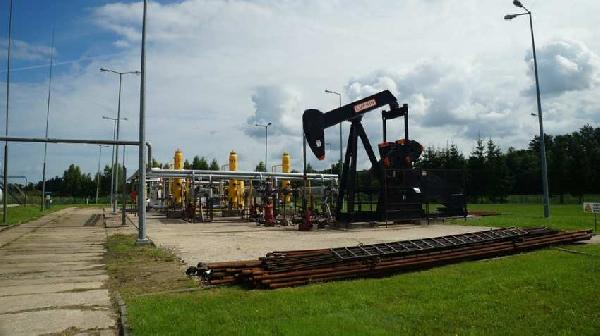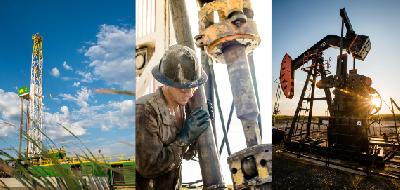How The Oil And Gas Industry Works? Investors can be quickly overwhelmed by the complex jargon and unique metrics used throughout the oil and gas Industries. This introduction is designed to help anyone understand the fundamentals of companies involved in oil and gas by explaining key concepts and standards of measurement.
About HydrocarbonCrude oil and natural gas are naturally occurring substances that are found in rock in the Earth's crust. These organic raw materials are created by the compression of the remains of plants and animals in sedimentary rock such as sandstone, limestone, and shale. Key Takeaways
The sedimentary rock itself is a product of deposits in ancient oceans and other bodies of water. As layers of sediment were deposited on the ocean floor, the decaying remains of plants and animals were integrated into the forming rock. The organic material eventually transforms into oil and gas after being exposed to specific temperatures and pressure ranges deep within the Earth's crust. Oil and gas are less dense than water, so they migrate through porous sedimentary source rock toward the Earth's surface. When the hydrocarbons are trapped beneath less-porous cap rock, an oil and gas reservoir is formed. These reservoirs of oil and gas represent our sources for crude oil and gas. Hydrocarbons are brought to the surface by drilling through the cap rock and into the reservoir. Once the drill bit reaches the reservoir, a productive oil or gas well can be constructed and the hydrocarbons can be pumped to the surface. When the drilling activity does not find commercially viable quantities of hydrocarbons, the well is classified as a dry hole, which is typically plugged and abandoned. Exploration and Production (E&P) CompaniesExploration and production (E&P) companies find hydrocarbon reservoirs, drill oil and gas wells, extract these raw materials, and sell them to be refined by other companies into products such as gasoline. This activity is often referred to as upstream oil and gas activity. Today, hundreds of public E&P companies are listed on U.S. stock exchanges. Virtually all cash flow and income statement line items of E&P companies are directly related to oil and gas production. Understanding Oil Production NumbersE&P companies measure oil production in barrels. One barrel, usually abbreviated as bbl, is equal to 42 U.S. gallons. Companies often describe production in terms of bbl per day or bbl per quarter. A common methodology in the oil patch is to use a prefix of "m" to indicate 1,000 and a prefix of "mm" to indicate one million. Therefore, 1,000 barrels is commonly denoted as mbbl, and one million barrels is denoted as mmbbl. For example, when an E&P company reports production of seven mbbl per day, it means 7,000 barrels of oil per day. Gas Production Numbers Explained
Note that natural gas futures trade on CME Group futures exchange, but are not measured in cubic feet. Instead, the futures contract is based on one million British thermal units, or mmbtu, which is roughly equivalent to 970 cubic feet of gas. For this reason, investors frequently think of an mcf of gas as being roughly equivalent to one mmbtu. E&P companies often describe their production in units of barrels of oil equivalent (BOE). To calculate BOE, companies usually convert gas production into oil equivalent production. In this calculation, one BOE has the energy equivalent of 6,040 cubic feet of gas or roughly one bbl to six mcf. Oil quantity can be converted into gas quantity in a similar fashion and gas producers often refer to production in terms of gas equivalency using the term mcfe. E&P companies report their oil and natural gas reserves—the quantity of oil and gas they own that is still in the ground—in the same bbl and mcf terms. Reserves are often used to value E&P companies and make predictions for their revenue and earnings. However, since the value of reserves is not a GAAP figure, it might not be reflected in a company's financial statements. Of course, new reserves are an essential source of future revenue, so E&P companies spend a lot of time and money exploring for new untapped reservoirs. If an E&P company stops exploring, it will have only a finite amount of reserves and a depleting quantity of oil and gas. Revenue will inevitably decline over time. In short, E&P companies can only maintain or grow revenue by acquiring or finding new reserves. Drilling and Service Companies
Once a well is drilled, various activities are involved in generating and maintaining its production over time. These activities are called well servicing and can include logging, cementing, casing, perforating, fracturing, and maintenance. Oil drilling and oil servicing thus represent two different business activities within the oil and gas industry. As is the case for drilling, many public companies are involved in well service activity. The revenue of service companies is tied to the activity level in the oil and gas industry. Rig count and utilization rates are indicators of the amount of activity happening in the United States at any given time. |
